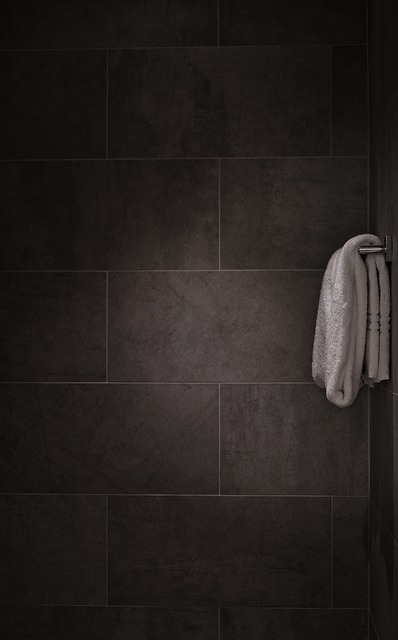An energy-efficient bathroom design leverages natural light through light-colored finishes, reducing electricity consumption and enhancing aesthetics. Using soft neutral tones for walls, ceilings, and tiles creates brightness and space, while mirrors and glossy finishes further reflect light. Modern fixtures with clear glass and natural fiber diffusers add warmth, making lighter colors ideal for smaller bathrooms. This trend, backed by studies showing significant energy savings, promotes sustainable living with reduced utility costs and a smaller environmental impact.
Discover how light-colored finishes can transform your bathroom into an energy-efficient oasis. This article explores the significant impact of natural light on energy consumption, highlighting the benefits of choosing lighter hues to reduce electricity use. We’ll guide you through popular design options, offer practical tips for implementation, and present inspiring case studies demonstrating the tangible energy savings achievable through this simple yet effective approach to energy-efficient bathroom design.
Understanding the Impact of Natural Light on Energy Consumption
Natural light plays a pivotal role in reducing electricity use, making it a key consideration in any energy-efficient bathroom design. Studies have shown that well-lit spaces not only enhance aesthetics but also significantly lower energy consumption compared to heavily reliant artificial lighting. This is particularly evident in bathrooms, which are often designed to maximize functionality and minimize natural light ingress.
By embracing light-colored finishes, such as pale tiles, mirrors, and paint, you can dramatically improve the reflection of available daylight throughout the space. These reflective surfaces act as a canvas for sunlight, spreading it across walls, floors, and ceilings, effectively illuminating the room without the need for excessive artificial lighting. This strategy not only reduces electricity use but also contributes to a more inviting, spacious, and energizing environment in your bathroom.
Benefits of Using Light-Colored Finishes in Bathrooms
In the pursuit of an energy-efficient bathroom design, light-colored finishes offer a strategic approach to enhancing natural light and reducing electricity use. These colors reflect rather than absorb sunlight, creating a bright and airy ambiance without relying heavily on artificial lighting. This simple yet effective strategy not only reduces the need for electrical power but also contributes to a more serene and relaxing environment.
By incorporating light-colored walls, ceilings, and even floor tiles, bathroom spaces can feel larger and more open. This visual expansion is particularly beneficial in smaller bathrooms, where every square inch matters. Such designs also facilitate better utilization of natural daylight throughout the day, minimizing the need for lighting during daytime hours. Consequently, homeowners can achieve a beautiful, inviting bathroom while making significant strides towards sustainability and lowering energy bills.
Popular Light-Colored Options for Bathroom Design
Practical Tips for Incorporating Light Colors Effectively
When designing an energy-efficient bathroom, light-colored finishes are your allies in maximizing natural light and reducing electricity use. Walls, ceilings, and even floor tiles in soft, neutral tones reflect available light, making spaces feel brighter and more expansive. Consider smooth, glossy finishes like white or beige paint for walls and ceiling, which bounce light around the room effectively. For an added touch, incorporate mirror placements strategically—both on walls and within cabinets—to further enhance reflection and spread ambient light.
In terms of fixtures, opt for sleek, modern designs with clear or frosted glass to allow natural light to pass through while reducing the need for artificial lighting during daylight hours. Natural fibers like linen or cotton in soft colors can also contribute to a light-filled atmosphere, diffusing light and adding warmth. Keep in mind that lighter colors make spaces appear larger, so they’re particularly beneficial in smaller bathrooms where maximizing space and light is key to creating an inviting, energy-efficient design.
Case Studies: Energy Savings through Light-Colored Bathroom Design
In recent years, there has been a growing trend in the interior design world to embrace light-colored finishes, especially in spaces where natural light is abundant—like bathrooms. This shift towards an energy-efficient bathroom design isn’t just about aesthetics; it’s a strategic move to reduce electricity use and lower energy bills. Case studies have shown that opting for light-hued walls, ceilings, and fixtures can significantly enhance the brightness of a room without relying heavily on artificial lighting.
For instance, a study conducted in North America revealed that homes with mostly light-colored bathroom finishes used 15% less electricity for lighting compared to those with traditional, darker designs. This simple change has a profound impact, not only on utility costs but also on the environment, as it contributes to a reduction in carbon footprint. By reflecting natural light and making the most of available daylight, light-colored bathrooms create a more energy-efficient and sustainable living space.
Incorporating light-colored finishes in your bathroom design is a simple yet powerful way to enhance natural light, reduce electricity use, and embrace an energy-efficient lifestyle. As demonstrated through various case studies, this approach can lead to significant energy savings while creating a bright, airy, and visually appealing space. By understanding the impact of natural light on energy consumption and exploring popular light-colored options, homeowners can make informed choices that benefit both their wallets and the environment. With practical tips for effective implementation, there’s no better time to transform your bathroom into a shining example of an energy-efficient bathroom design.
